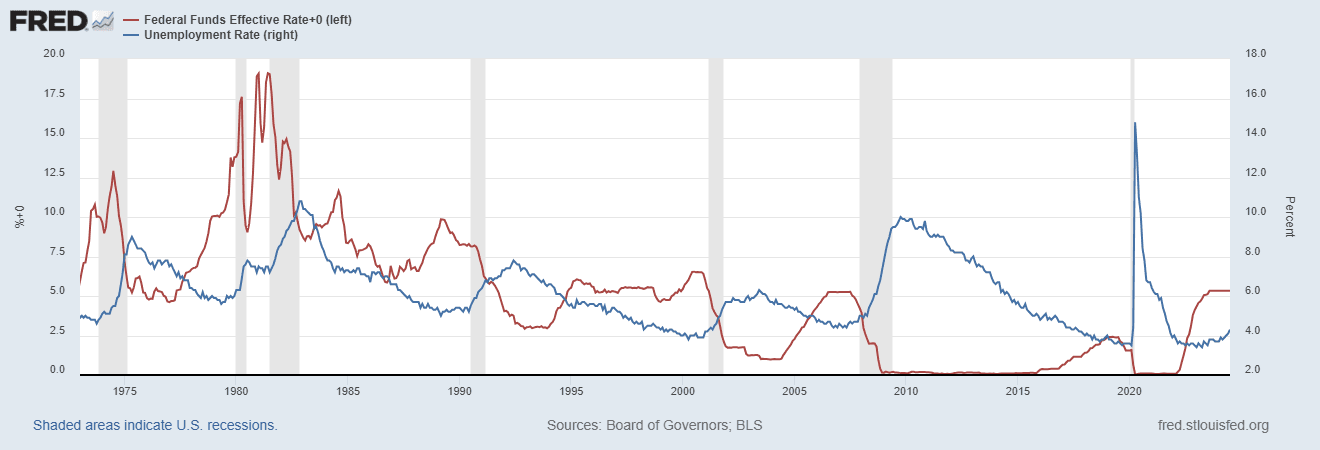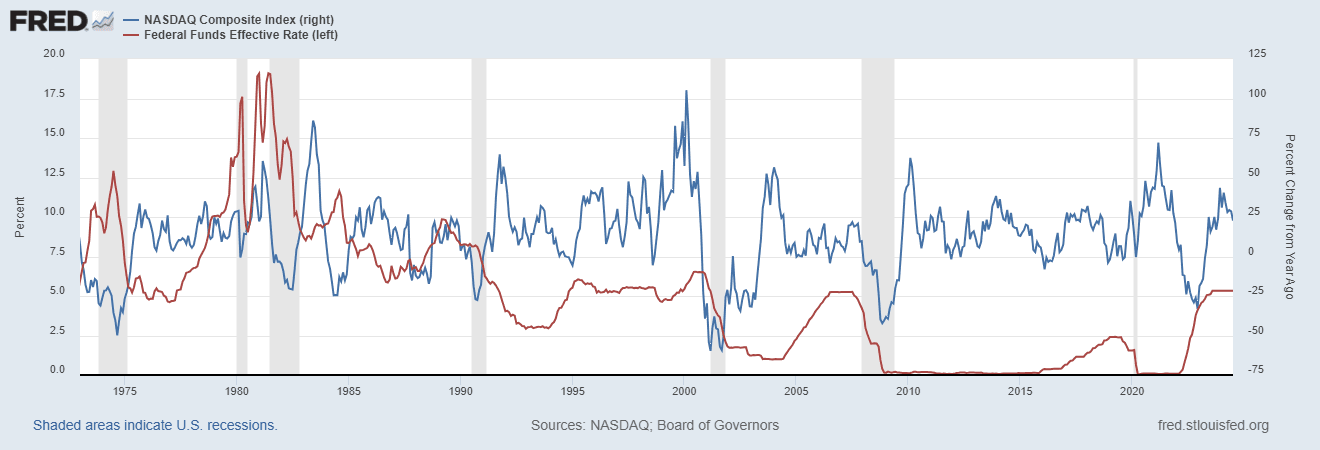26/08/2024
Waiting for Federal Reserve
Newsletter #72 - August 2024
The dilemma of the central banks
In an Opinion on Bloomberg.com on 7th August Mohammed El-Erian former chief executive officer of Pimco had the following observation:
“The immediate market reaction to a new Bank of Japan policy signal illustrated, once again, the dilemma that central banks, led by the Federal Reserve, have created for themselves over two decades. While few central bankers seem willing to take the risk and play the role that Paul Volcker did in the early 1980s to break an inflationary spiral, all should be mindful of something that is as true today as it was then: Lasting financial stability requires genuine economic stability, and vice versa.”
The dilemma of the central banks is, that they are trying to solve too many types of economic and financial problems with too few instruments.
In the process the Central banks have lost focus of their primary objectives:
- To control inflation
- Stability in credit formation and the financial system
- And for the Federal Reserve employment
Lack of lasting stability
Central bankers today face other challenges than Paul Volcker did in the early 1980’ties. But then again, high inflation is not as far away as we saw over the last 24 months, where inflation in many countries hit double digits.
It is not in the job description of central banks to eliminate business cycles in the economy. Neither is it in their job description to save the financial markets from themselves every time asset prices fall.
Over the last 25 years, central banks have again and again bailed out the financial markets creating moral hazard.
This situation is commonly known as the “Federal Reserve or Greenspan put”. If asset prices fall Federal Reserve will ride to the rescue and safe everyone from facing significant losses.
Moral hazard created by fiscal and monetary policy
Over the last 25 years and especially after the Financial Crises in 2008, government and central banks in the US and Europe have done their outmost to avoid any downturn in the economy and thereby in the pricing of financial assets.
Lose fiscal policy
Running a deficit on the public finances has almost become a mantra for the politicians and during COVID deficits exploded and it have been very difficult to reduce spending or roll back tax cuts.
The fiscal effect has been pushing demand up in the overall economy and with low unemployment rate this has helped pushing up wage demands. However, there are still areas of the labour market which have some catching up to do.
Exuberance of liquidity
Quantitative easing has provided an exuberance of liquidity in the financial systems, which not surprising has helped inflating almost all types of financial assets.
Central banks provided this liquidity by buying government bonds and if that was not enough, mortgage or corporate bonds. This lowered credit spreads to be levels not seen before.
Extremely low or negative interest rates
And if liquidity was not enough, interest rates were pushed down to zero or in the case of ECB even negative rates.
Central banks should stand their ground
Mohammed El-Erian rightly continuous in his Opinion:
“The system needs a Volcker moment, one similar to the early 1980s, when as head of the Fed, he boldly sought to and succeeded in breaking inflation’s grip on the economy, which also contaminated mindsets. What is needed now is to break the de facto ability of markets to bully central banks.”
Central banks should after 40 years break with the financial markets repeated demand to be saved from themselves and their own mistakes.
This would require the acceptance that financial institutions can and should fail to avoid moral hazard in the financial markets.
The economic facts
Many private persons and companies in the US are facing economic serious difficulties. There is hardly a day without an announcement for further layoffs within big companies. Likewise, is the cost-of-living crises serious problem for many low- and middle-income families.
While the private sector is facing difficulties, the public sector in the US is spending like the economy is in severe problems.
Figure 1 US Federal surplus or Deficit as percentage of GDP

The Federal deficit as percentage of GDP has only been this big during WW2, the Financial crises or under COVID.
For 2023, the deficit was 6.2% of GDP and the Congressional Budget Office estimate that the deficit in 2024 will only fall to 5.6% of GDP and then revert to 6.1% of GDP in 2025.
The public sector is slowly crowing out the private sector and this is main factor why the US economy is not in recession.
With the public sector keeping up demand getting down inflation is difficult.
CPI numbers for July 2024 showed that inflation fell to just down under 3% as seen from the chart below:
Figure 2 Federal funds rate and CPI inflation

The argument, that since inflation is under the upper limit Federal Reserve should lower interest rates makes little economic sense. As long as there are no indicators suggesting that the US economy in a severe recession, why should Federal Reserve try to accelerate the economy.
While we daily hear about companies laying off people this still has to show up the in official statistics like the unemployment rate.
Figure 3 Federal Funds Rate and unemployment rate

As seen from the chart above, unemployment rate in the US is still on a very low level. While not a clear rule, Federal Reserve tends to lower Fed Funds rates only when unemployment hits 5%. We are still 0.7%-point away from that level.
Figure 4 Annual growth of Nasdaq composite index and Fed Funds Rates

Commercial real estate has been suffering over the last 12 month, but the equity markets are still doing very well as from the chart above.
It might be that the Nasdaq Composite index is driven by the “Magnificent Seven”, but the equity markets are not indicating a slowdown in the economy. Or maybe the financial markets can still manage to talk themselves into believing in the “Federal Reserve put”.
Waiting for Federal Reserve
While the private sector clearly is struggling in the US, the public sector is more than compensating for the lack of private demand by running a deficit for more than 5% of GDP.
The economic policy mix in the US is not good. However, as long as the politician in the US cannot agree to reduce spending or increase taxes in order to balance public budget the conundrum for Federal Reserve continues.
The fundamental problem for Federal Reserve is that they must consider the entire economy and not only the private sector.
From a purely macro economic point of view, it is difficult to argue for Federal Reserve should lower interest rates given the current economic facts
After Jackson Hole
After Chairman Powells speech at Jackson Hole, it is unlikely that Federal Reserve knows something the rest of the financial market do not.
A cut in interest rates at the next FOMC meeting was all but promised in Powell’s speech, the only question is how much.
Thereafter, the path of monetary policy is blurrier.
In our view, the fiscal policy - and deficit of the general government - which will be implemented after the presidential election in the US in just over 2 months’ time will be most more important for the world economy than an adjustment of the monetary policy.